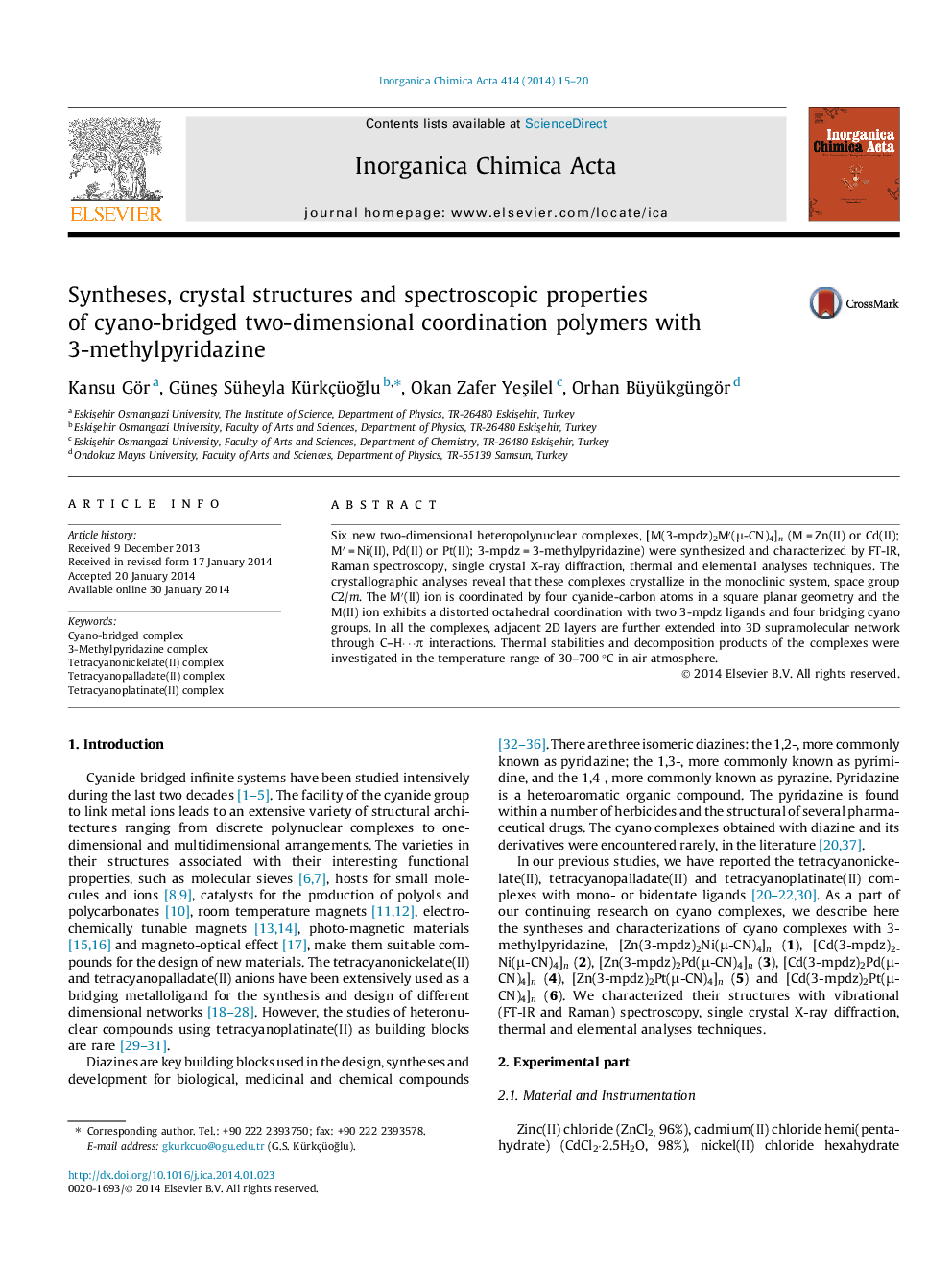| Article ID | Journal | Published Year | Pages | File Type |
|---|---|---|---|---|
| 1305657 | Inorganica Chimica Acta | 2014 | 6 Pages |
•Six new 2D bimetallic coordination complexes were synthesized and characterized.•In the crystal structure, adjacent planes expand by intermolecular C–H⋯π interactions.•The M′(II) ion is coordinated in a square planar; M(II) ion is coordinated in octahedral geometry.
Six new two-dimensional heteropolynuclear complexes, [M(3-mpdz)2M′(μ-CN)4]n (M = Zn(II) or Cd(II); M′ = Ni(II), Pd(II) or Pt(II); 3-mpdz = 3-methylpyridazine) were synthesized and characterized by FT-IR, Raman spectroscopy, single crystal X-ray diffraction, thermal and elemental analyses techniques. The crystallographic analyses reveal that these complexes crystallize in the monoclinic system, space group C2/m. The M′(II) ion is coordinated by four cyanide-carbon atoms in a square planar geometry and the M(II) ion exhibits a distorted octahedral coordination with two 3-mpdz ligands and four bridging cyano groups. In all the complexes, adjacent 2D layers are further extended into 3D supramolecular network through C–H⋯π interactions. Thermal stabilities and decomposition products of the complexes were investigated in the temperature range of 30–700 °C in air atmosphere.
Graphical abstractIn all complexes, M′(II) ion is four coordinate with four cyanide carbon atoms in a square planar geometry and [M′(CN)4]2− ions coordinated to M(II) ions as a bridging ligand. All complexes reveal that the structures consist of two dimensional layer. Adjacent planes are further stacked through intermolecular C–H⋯π interactions to form 3D supramolecular network.Figure optionsDownload full-size imageDownload as PowerPoint slide
